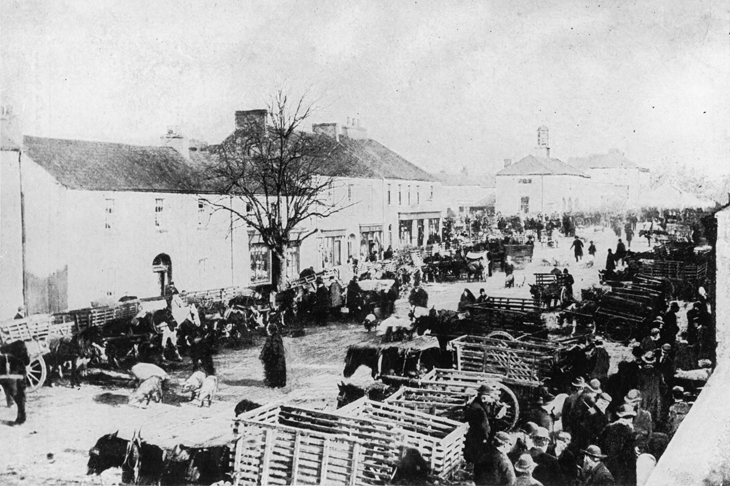This large and splendid book is more in the nature of a grand illustrated guidebook than a historical monograph. Hundreds of
photographs cover every aspect of Abbeyleix today, the magnificent Georgian house 60 miles south-west of Dublin — its contents, the garden and demesne, not to mention the owner’s family and friends. It makes a fascinating insight into the revival of the Irish country house in recent decades, as bankers, lawyers and entrepreneurs have taken on Irish estates and shaken them out of their 20th-
century slumberous (or violent) decline.
William Laffan has produced a well written overview of one of the more spectacular contemporary resurrections. Abbeyleix is of a considerable interest in its own right, as the work of James Wyatt, while the romantic wooded demesne, with carpets of bluebells, is a survival of the ancient forest which once covered the flat Irish midlands.
Occupying the site of a medieval monastery, Abbeyleix was a characteristic achievement of an Anglo-Irish Ascendancy family in Ireland’s golden period in the second half of the 18th century — the Age of Grattan. When it was created, the wars and horrors of the 17th century were well behind; the country enjoyed a degree of self-rule, with its own parliament in Dublin, a well-educated, entrepreneurial and cultivated (Protestant) ruling class; the beginnings of modern commercial development — canals, mills, harbours and a growing textile industry — and even, in the 1770s, the first stages of Catholic emancipation for the mass of the population.
This civilised equilibrium was not to last. It was too shallow-rooted. The French-inspired rebellion of 1798, the Act of Union, the absence of coal and iron and the reliance on the increasingly diseased potato crop snuffed it all out. But for 30 years there was a cultural and economic boom, and the new Anglo-Irish ruling class was prosperous and optimistic.
The Veseys, who built Abbeyleix and its model village, landscaped the demesne and laid out modern farms, were typical of this class and period. Their ancestor William had fled to Ulster from England in the 16th century, having killed a man. His grandson John, well educated at Westminster and Trinity College, Dublin, rose to be Archbishop of Tuam, a member of the privy council and a Lord Justice, thanks to his personal qualities and the patronage of the 1st Duke of Ormonde, Charles II’s man in Ireland. And his son in turn, Thomas (1673–1730) married the daughter of a property speculator who had bought Abbeyleix in the mid-17th century, though the title remained subject to litigation until 1769. The resolution of that dispute
enabled Thomas’s grandson to commission James Wyatt, fresh from his triumph as architect of the Pantheon in London, to design a
new house.
Wyatt had become the most popular architect in Ireland, though he only visited once and worked largely through an amanuensis in Dublin, the Quaker Thomas Penrose. The foundation stone was laid in 1773. The new house was typical of Wyatt, with a plain, almost austere but well-
proportioned exterior and elegant rooms with neoclassical stucco, marble chimney pieces imported from London and decorative paintings by Peter de Gree, newly settled in Dublin. The stone for dressings came from the Kilkenny quarry, where the owner, William Coles, had developed innovative water-powered sawing machinery for ashlar stone, typical of the pioneering technology which was helping to improve the Irish economy in the 1770s.
In 1776, as Abbeyleix was nearing completion, John Vesey was created Viscount de Vesci, suggesting a descent from Norman barons for which there is no evidence. His descendants lived at Abbeyleix until 1992. Thomas, the 3rd Viscount, married Lady Emma Herbert in 1839 (the daughter of the 11th Earl of Pembroke and his
dazzling Russian second wife Catherine Woronzow). Emma inherited her mother’s flair and drive and immediately employed
T.H. Wyatt, who had worked for the
Pembrokes at Wilton, to turn the outside into an Italianate villa with terraced gardens, and add a library and conservatory. The house survived in that form, becoming an outpost of the Souls and decorated with William Morris wallpaper in the late 19th century.
Laffan describes the construction and development of the house in one chapter, and devotes another to the medieval antecedents of the place as a Cistercian house in the Middle Ages. But most of the book is concerned with its recent history, after its acquisition by Sir David Davies, the banker son of a Welsh industrialist, who bought the house and demesne in 1994 from the 7th Viscount de Vesci, and has carried out a careful restoration of the place as a setting for his collection of furniture and pictures. Davies appeared as a knight in shining armour, rescuing the property at a time when some Irish estates were being ruined forever by development as golf courses and leisure centres.
Sir David’s intervention in particular has saved the demesne, which has long been famous for its wonderful trees, including the oldest oak in Ireland, and several other Irish champions, notably a scots pine and a field maple of great height and girth. These historic giants have been complemented by a new arboretum, devoted to trees originating from east of the Urals. Over 150,000 new trees have been planted to enhance the groves and belts of indigenous oak and ash.
This book is a handsome record of the revival of a splendid Irish Georgian house. The photographs were specially commissioned and there are charming hand-drawn maps of the demesne for endpapers. It makes a worthwhile addition to the Irish architectural shelf.






Comments